Yes, there is. The female condom is a barrier method of contraception, it is technically the same as men’s. It’s thin, soft, loose-fitting sheath with a flexible ring at each end. One of the sides closed.
Seriously, there are female condoms?
The inner ring at the closed end is used for easy introduction into the vagina and hold the condom in place during intercourse. The outer ring on the other hand remains outside the vagina and covers part of the external genitalia.
Doctor Karina Bondarenko clarifies that the size of the female condom, usually one, but it can vary by manufacturer. For example, the length of the size of FC2 (the modern version of this contraceptive) varies 163-183 mm and a width of 76 to 83 mm. the American “Wikipedia” advises women who recently gave birth to a child, first try the larger size.
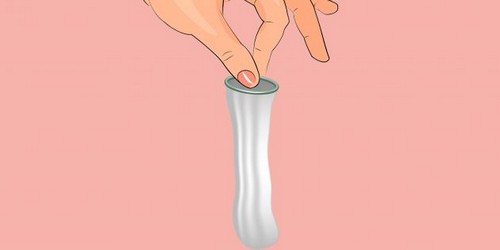
Who and why invented?
“Invented female condoms Danish doctor Lasse Hessel (Lasse Hessel). While the first prototypes were created in 80-ies in response to high rates of HIV infection in Africa, says Dr. Bondarenko. – They were invented with a single purpose – to protect the woman in developing countries, third world countries from the consequences of male aggression and violence. From unwanted pregnancy and from sexually transmitted infections during intercourse with a partner who does not want to use the male condom.”
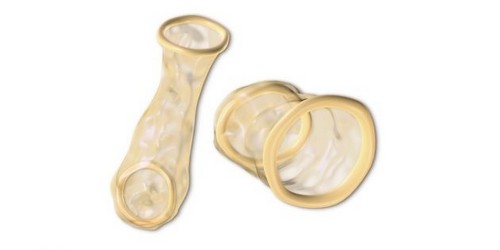
According to Bondarenko, the United Nations Fund for population free distributed them to the women of these countries. Then the FDA food and drug administration (FDA) has approved the release and use in the U.S. the first version of the female condom (FC1) in 1993. That is, they went on sale almost 25 years after creation.
FC1 is made from polyurethane, they were extremely uncomfortable, often dropped, and from the friction in the process of sexual intercourse had the unpleasant sounds.
“In 2009 they completely replaced the female condom is the second version (FC2), made of a thin and elastic material – nitrile, which greatly improved their quality,” – said Dr. Bondarenko.
Now on sale in several countries with female condoms made of nitrile (the basis is the synthetic analog of rubber) and latex (the base is rubber).
Why don’t they become popular?
In the opinion of the obstetrician-gynecologist don Binam (Dawn Bingham), one of the reasons for the extremely low popularity of female condoms – the absence of a competent advertising campaign, which, in turn, difficult to implement technically.
To demonstrate how to use the male condom, it is easy on any object of phallic shape, and even without the erotic subtext everything clearly and banana.
To demonstrate the use of the female condom is necessary to use images of genitals in the context that for large-scale distribution looks like a real problem. Tampons once could not sell for the same reason.
If there are available male condoms, which have been used for centuries, the choice is obvious. The authors of the Vox tried to buy the female condom, has traveled half the town and not found them in any pharmacy.
It turned out, in the US there is only one manufacturer of female condoms, which can be purchased only on their website. By the way, the author-a man in order to buy the male condom, is not required to go even out of the building where he works.
“Female condoms are undervalued as it once was undervalued benefits of tampons. At the dawn of their appearance in the 1930s, they were only used by 4-6% of women, says Dr. Bondarenko. – The problem, in my opinion, is bipolar: on the one hand, the female condom is a method of protection of violated rights, women from third world countries, with another – the attribute of feminism, the need for women, which itself regulates their sexual life and reproduction, protects itself from infections, rather than relying on the decisions, sometimes unconsciously (and maybe infected) sexual partners.
The appearance of the female condom is quite palpable every woman’s right to independence in sexual matters and a small but significant victory on the path to gender equality.
In my experience, information about the existence of female condoms owns probably a third to half of my patients. About the technique of using only a few know. Yes, to be quite honest, not every obstetrician is fully aware, for example, rules for the introduction and removal of a female condom as this kind of certified products, authorized for sale in Russia, you will not find in the pharmacy networks.”
According to Bondarenko, another limitation preventing widespread distribution of female condoms for continuous use, is their relatively high cost is 2-3 times higher than male counterparts.
“Significant obstacle to the young woman even begin to think in this direction, in my opinion, can be considered the apparent complexity of the introduction of the female condom, although the instructions are very simple and are readily available, for example, on the website of the Centre for control and prevention of diseases of the United States. And it is designed for the average man” – said Bondarenko.
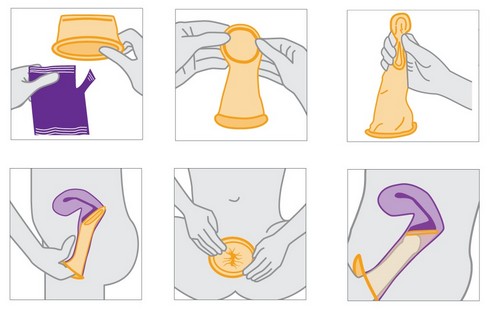
According to researchers, women 15-45 years in the United States, make sterilization more often than I use female condoms: 15% vs. 0.2%. And 0.2 percent is “other methods”, which includes not only female condoms.
In another study to popularise female condoms, the observations showed the following results: by the end of the study, 8% of the participants used the female condom exclusively, 15% for the male condom exclusively, 73% of both types of condoms.
How effective are female condoms?
Dr. Bondarenko says that female condoms along with male, belong to the barrier methods of contraception, which are based on a mechanical obstacle to the meeting of sperm and egg.
The effectiveness of any method of contraception is assessed by the Pearl index is the ratio of failures, which is equal to the number of unplanned conceptions in the course of one year in 100 women using a particular method of contraception. The lower the score, the more reliable method of contraception.
“But we need to distinguish the effectiveness of the method when it is perfect and real. It is believed that the perfect Pearl index for female condoms is about 5 (for the male is about 2), – Bandarenka says. – However, perfect use any method necessary to comply with all conditions and recommendations on its application, ranging from all time requirements to appliances.
Of course, this requires some experience accumulated, usually with age, and the lack of skills will increase the likelihood of pregnancy even when using very efficient methods of contraception that are female condoms.
If we talk about the real efficiency of protection from unwanted pregnancy male and female condoms, it is broadly comparable and is about 80%”.
Also the female condom covers a wider area than the male. Thus, it can provide extra protection against diseases of the labia, the perineum and the base of the penis.
How to use them?
1. Training
Check the expiration date on the package. If everything is in order, open the package and carefully remove the female condom, being careful not to break it. Do not open the package with his teeth.

The female condom is already lubricated but you can add more lubricant if you want. Doctor Karina Bondarenko adds that female condoms necessarily involve the use of lubricants that are introduced into the inside of the condom or applied to the penis.
Depending on the material of the female condom, you can use different kinds of lubricants. The lubricant is water or silicone based is safe for use with any female condom.
Lubricant based oils cannot be used concurrently with latex condoms, as under their influence destroyed the latex.
2. Introduction inside
Relax and take a comfortable position. Standing with one foot on a chair, lying or squatting position – any position in which you used to enter the tampon will fit.

Squeeze the smaller ring at the closed end of the condom and enter the vagina like a tampon to enter.
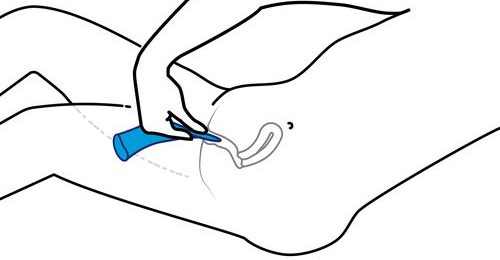
Insert the inner ring into the vagina as possible, up to the cervix.
Insert a condom in your finger, so you have it spread, will push further and check whether it is not twisted.

Make sure the large ring at the open end of the condom covers the area around the hole of the vagina. All, now you can carry on with a condom inside until 10 o’clock.
3. Sex
Make sure that the penis enters the condom and not between the condom and the side of the vagina.

4. Extract
After sex remove the condom. To start, twist the outer ring to keep semen inside the pouch.
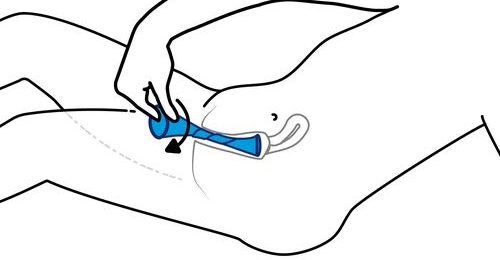
Carefully remove the condom, being careful not to spill semen.
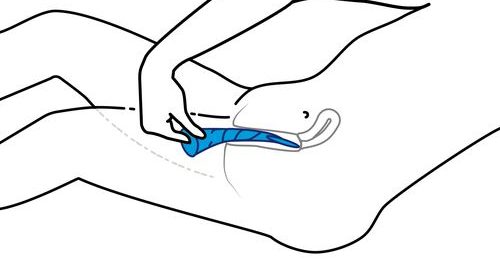
Throw the condom in the trash, not the toilet.
Are there any risks?
According to Dr. Karina Bondarenko, in some cases, the use of the female condom may irritate the vagina, vulva, penis or anus.
“Sometimes a condom weakens the sensation of sexual intercourse, but, on the other hand, can improve the quality of sexual relations due to the fact that the external ring of condom may stimulate the clitoris or penis during vaginal intercourse. Also there is a small risk of slipping it into the vagina or anus or a loss during sexual intercourse that reduces the degree of protection from both unwanted pregnancy and sexually transmitted infections,” says Bondarenko.
What are their advantages and disadvantages?
Pros
- When used correctly, female condoms are effective 95% (male – 98%).
- Protect against pregnancy and sexually transmitted infections (STIs), including HIV.
- Made of safe materials.
- Easy to use.
- You can insert for 8-10 hours before sex and not to waste time on it in the process of foreplay.
- Can be used during menstruation.
- Can be used with a spermicide (a means of contraception, spermicides).
- Can be used by people allergic to latex.
- The female condom does not require male erection kept him in place.
- Controlled by the woman.
Cons
- If used improperly, female condoms are effective in 79% (male 85%).
- More research is needed to assert that the absolute effective protection against STIs.
- The condom could get too far into the vagina, but it is easy to remove if that happens.
- May not be suitable for women who are uncomfortable when it comes to their genital region (and the outer ring of the female condom will lie on top of the labia).
- If the woman has any infections of the reproductive tract (candidiasis, bacterial vaginosis), when the introduction of a condom for 8-10 hours prior to sex may increase odor, itching, discharge and so on. So Dr. Bondarenko recommends in this case to introduce the condom just before sex.
- Experts have not reached consensus whether to use the female condom during anal sex. It is technically possible, but difficulties arose with the introduction of a slippage. As female condoms are much thinner than men’s, they were torn, and respondents complained of more severe pain than normal condoms, and bleeding the host partner.
- A rustling sound during intercourse is still possible.



